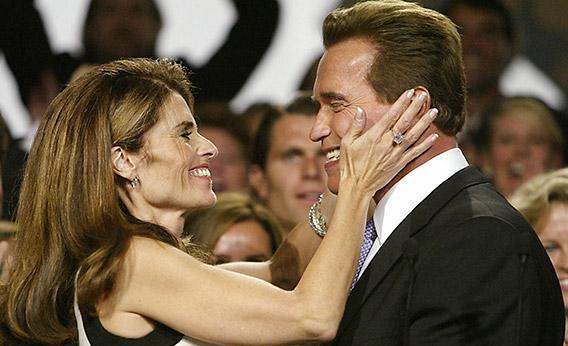Arnold Schwarzenegger still hopes to win back Maria Shriver, who filed for divorce from him last year after learning that Schwarzenegger had fathered a son with the family’s housekeeper. When divorced couples remarry each other, how often does it work out?
Probably less than one-half the time. Anecdotes about divorced couples who remarry each other abound, especially among politicians and celebrities, but there’s little in the way of systematic research. A 2004 survey of 1,147 divorcees by the AARP suggested that around 6 percent give their marriage another try, while 4 percent continue to have sex with each other after they divorce. The most detailed study of the success of second-chance marriages comes from 1938, when pioneering marriage counselor Paul Popenoe compiled 200 stories of couples that married each other two or more times. (His sample, drawn from his patients, acquaintances of his students, and newspapers clippings, wasn’t exactly random.) Popenoe reported that 48 percent of the remarried couples were happy together at the time of the study. It’s not clear whether that estimate remains accurate today, when the overall divorce rate is nearly double that of the 1930s. The second-chance divorce rate may have risen with the overall divorce rate. On the other hand, some modern couples may divorce too hastily, then find themselves compatible on the second try.
Popenoe’s 1938 study suggests that, even if Shriver decides to give Schwarzenegger another chance, the ex-governor might have to wait a while. Couples that have long first marriages—Schwarzenegger and Shriver were together for 25 years before separating in 2011—tend to wait longer to get back together, for unknown reasons. Second-timers are, however, quick to pull the plug on the do-over. Popenoe found that, among repeat divorcees, the second marriage typically lasts less than a year.
Popenoe’s qualitative analysis is no longer useful, largely because he was a man of his time (a condition also made evident by his fervent support of the eugenics movement). He blamed many second marriages on wives who longed for “ ‘freedom,’ self-expression, or an independent career,” only to learn that “the world did not yearn for her talents in art or business.” Popenoe would describe the Schwarzenegger-Shriver separation as the result of a “righteously indignant” wife upset that her husband had a “middle age infatuation” with an “adventuress.”
Certain societies have, at times, taken a dim view of second-chance marriages. Romanian divorcees were forbidden to remarry their exes during the 19th century, for example. In India, the law that applies to Muslim marriages prohibits remarriage to the same person, unless the wife has first married and divorced another man, in a practice known as “Halala.”
Got a question about today’s news? Ask the Explainer.
Video Explainer: Does Heroin Usually Have a Brand Name?
